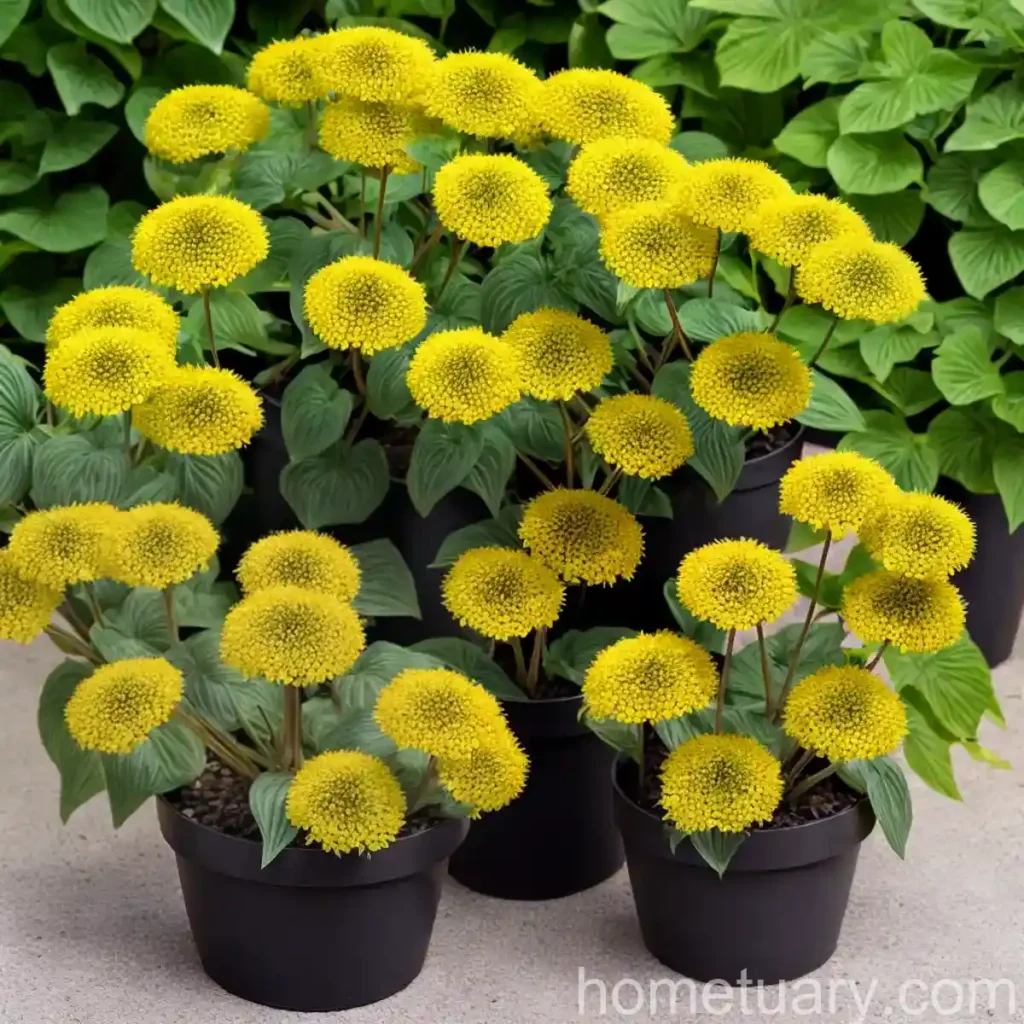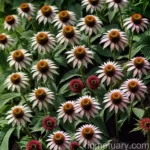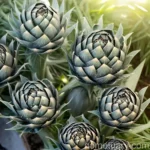Leopard Plant (Ligularia ‘The Rocket’): A Comprehensive Guide
Leopard plant, scientifically known as Ligularia ‘The Rocket’, is a stunning perennial plant renowned for its large, dark green leaves and tall spikes of brilliant yellow flowers. This resilient and visually captivating plant can be an excellent addition to any garden or landscape with the right care and maintenance.
In this comprehensive guide, we will delve into all aspects of the leopard plant, covering its culture, uses, maintenance, common diseases and pests, and much more. Whether you are a seasoned gardener or a novice enthusiast, this article aims to provide you with valuable insights into the cultivation of this beautiful plant.
What is a Leopard Plant?
Leopard plant, or Ligularia ‘The Rocket’, belongs to the Ligularia genus, which is a part of the Asteraceae family. This species is native to East Asia, particularly in regions such as China, Korea, and Japan. It boasts large, glossy, heart-shaped leaves and produces striking yellow flowers that bloom atop long, sturdy stems. The plant’s foliage and flowers create a visually appealing contrast, making it an eye-catching addition to any garden landscape.
Key Takeaways – Leopard Plant (Ligularia ‘The Rocket’)
Before delving into the specifics, let’s highlight some key takeaways regarding the care and cultivation of the leopard plant.
-
Leopard Plant Care: Proper care is essential for maintaining the health and vitality of the leopard plant. This includes providing adequate sunlight, water, and soil conditions, as well as implementing appropriate pruning and fertilization techniques.
-
Ligularia ‘The Rocket’ Tips: Understanding the specific needs and requirements of Ligularia ‘The Rocket’ is crucial for successful cultivation. This includes attentive monitoring of watering, sunlight exposure, and soil moisture levels.
-
Growing Leopard Plants: Creating an optimal environment for leopard plant growth involves considering factors such as soil composition, drainage, and climate suitability.
-
Ligularia ‘The Rocket’ Care Instructions: Following recommended care instructions is essential for promoting robust growth and flowering in the leopard plant.
-
Leopard Plant Varieties: Exploring the various leopard plant varieties can provide insights into their unique characteristics and growth habits, allowing for informed decision-making when selecting plants for cultivation.
-
Ligularia ‘The Rocket’ Characteristics: Understanding the distinct features and traits of Ligularia ‘The Rocket’ contributes to an enhanced appreciation of its beauty and ecological significance.
-
Leopard Plant Maintenance: Regular maintenance tasks, such as pruning and fertilizing, play a vital role in sustaining the health and vigor of the leopard plant.
-
Ligularia ‘The Rocket’ Gardening: Leveraging effective gardening practices can facilitate the successful cultivation and display of Ligularia ‘The Rocket’ in various garden settings.
-
Leopard Plant Landscaping Ideas: Incorporating leopard plants into landscaping designs can enhance the aesthetic appeal and visual diversity of outdoor spaces.
-
Ligularia ‘The Rocket’ Planting Guide: A comprehensive planting guide is essential for ensuring the successful establishment of Ligularia ‘The Rocket’ in garden or landscape settings.
These key takeaways provide a broad overview of the essential aspects to consider when cultivating and caring for the leopard plant. Now, let’s explore each of these elements in detail.
Culture
Proper cultural practices are fundamental to the successful growth and development of leopard plants. By understanding the specific cultural requirements of Ligularia ‘The Rocket’, gardeners can create an environment that promotes the plant’s health and vitality.
Uses
Leopard plants, including Ligularia ‘The Rocket’, have a variety of uses in garden and landscaping settings. The striking foliage and vibrant flowers make them an attractive option for:
-
Garden Borders: Leopard plants can be used to create beautiful borders along garden pathways and flower beds, adding visual interest and color contrast.
-
Shade Gardens: Due to their preference for moist, shaded environments, leopard plants are excellent choices for shaded garden areas, where they can thrive and contribute to the overall aesthetic appeal.
-
Water Gardens: With their love of moisture, leopard plants are ideal for adding lush greenery and vibrant blooms to water gardens, ponds, or areas with consistently damp soil.
-
Foliage Contrast: The large, heart-shaped leaves of the leopard plant provide a striking contrast against finer-textured foliage, adding depth and visual appeal to garden compositions.
-
Accent Planting: The tall, stately flower spikes of Ligularia ‘The Rocket’ make it an attractive choice for creating focal points or providing vertical interest in garden designs.
Water
Proper watering practices are crucial for the health and vigor of leopard plants. Ligularia ‘The Rocket’ thrives in consistently moist soil and requires adequate hydration to support its lush foliage and flowering.
-
Watering Needs: Leopard plants prefer consistently moist soil. Ensure that the plant is watered regularly, especially during dry periods, to maintain soil moisture levels. Avoid waterlogged conditions, as excessive moisture can lead to root rot.
-
Soil Moisture: Regularly monitor the soil moisture content to ensure that it remains consistently moist but well-drained. Mulching the soil around the plant can help retain moisture and regulate soil temperature.
-
Water Conservation: Implement water conservation practices, such as using drip irrigation or soaker hoses, to deliver targeted moisture to leopard plants while minimizing water wastage.
Sunlight
Although leopard plants thrive in moist, shaded environments, they require a balance of sunlight and shade to support healthy growth and flowering.
-
Sunlight Requirements: Provide filtered sunlight or partial shade for the leopard plant. In hot climates, ensure that the plant is shielded from intense afternoon sun to prevent leaf scorch.
-
Shade Gardening: Incorporate leopard plants into shaded garden areas, where they can flourish and contribute to the lush, green ambiance while showcasing their vibrant blooms.
-
Shade Tolerant: Leopard plants are well-suited to shaded locations and can thrive in areas with minimal direct sunlight, making them excellent additions to shade gardens or woodland settings.
Fertilizer
Appropriate fertilization is essential for providing leopard plants with the necessary nutrients to support robust growth and prolific flowering.
-
Fertilizing Techniques: Apply a balanced, slow-release fertilizer in early spring to provide leopard plants with essential nutrients for the growing season. Avoid excessive fertilization, as it can lead to rapid, leggy growth.
-
Nutrient Requirements: Leopard plants benefit from a balanced fertilizer formulation, with an emphasis on promoting healthy foliage and vibrant flower production.
-
Organic Fertilizers: Consider using organic fertilizers to nourish leopard plants while promoting soil fertility and microbial activity.
Soil
Understanding the soil preferences and requirements of leopard plants is crucial for creating an optimal growing environment that supports their health and vitality.
-
Soil Preferences: Leopard plants thrive in rich, moist soil with good drainage. Incorporate organic matter, such as compost or well-rotted manure, into the soil to improve its moisture retention and fertility.
-
Acidic Soil: Leopard plants prefer slightly acidic soil conditions. Conduct a soil test to assess the pH level and make necessary amendments to achieve an optimal growing environment.
-
Well-Drained Soil: Ensure that the soil provides adequate drainage to prevent waterlogging, which can lead to root rot and other moisture-related issues.
Pruning
Pruning plays a key role in maintaining the appearance and vigor of leopard plants. By implementing proper pruning techniques, gardeners can promote healthy growth and enhance the overall visual appeal of the plant.
-
Pruning Tips: Remove spent flowers and yellowing leaves to encourage continuous blooming and maintain a tidy appearance. Trim back any leggy or overcrowded growth to improve air circulation and prevent disease.
-
Pruning Frequency: Regularly inspect the plant for any dead or damaged foliage and promptly prune as needed to prevent the spread of pests and diseases.
-
Deadheading: Remove faded flowers to stimulate the production of new buds and prolong the flowering period of leopard plants, promoting a continuous display of vibrant blooms.
Propagation
Propagation methods allow gardeners to multiply their leopard plant collection and share the beauty of Ligularia ‘The Rocket’ with others. Understanding the various propagation techniques can empower individuals to expand their gardening endeavors.
-
Propagation from Cuttings: Propagate leopard plants from stem cuttings taken from healthy, established plants. Choose non-flowering shoots and root them in a moist, well-draining propagation medium.
-
Division: Divide mature leopard plants in early spring to create new specimens. Carefully separate the root ball into individual sections, ensuring that each division has healthy roots and shoots.
-
Seed Propagation: Collect seeds from mature leopard plant flowers and sow them in a suitable growing medium. Provide warmth, moisture, and indirect light to encourage germination and seedling development.
Container Popularity
The striking appearance and adaptability of leopard plants make them popular choices for container gardening. Whether on patios, balconies, or outdoor living spaces, leopard plants can thrive in containers when provided with the right care and growing conditions.
-
Container Selection: Choose spacious containers with adequate drainage holes to accommodate the robust root system of leopard plants. Select pots that complement the plant’s size and visual appeal.
-
Container Gardening: Cultivate leopard plants in containers to create captivating focal points or add vibrant greenery to outdoor spaces. Position the containers in shaded areas with indirect sunlight to provide an optimal growing environment.
-
Container Maintenance: Monitor soil moisture levels and water the plants regularly to ensure that the growing medium remains consistently moist. Fertilize container-grown leopard plants as needed to support healthy growth and flowering.
Common Diseases
Leopard plants are generally resilient, but they can be susceptible to certain diseases and environmental stressors. Understanding common diseases and their prevention is essential for maintaining the health and vitality of Ligularia ‘The Rocket’.
Disease Diagnosis
Be attentive to any signs of disease or distress in leopard plants, and take prompt measures to address the underlying issues.
-
Leaf Spot: Keep an eye out for symptoms of leaf spot, such as dark lesions or discoloration on the foliage. Provide adequate air circulation and avoid overhead watering to minimize the risk of fungal diseases.
-
Root Rot: Monitor soil moisture levels and drainage to prevent conditions conducive to root rot. Avoid waterlogged soil, and improve drainage in the planting area if necessary.
-
Powdery Mildew: Watch for the development of powdery white patches on the foliage, which indicate the presence of powdery mildew. Ensure proper air circulation and consider applying preventative fungicidal treatments.
Common Pests
While leopard plants are relatively resistant to pest infestations, they may occasionally encounter certain pests that can impact their health and appearance.
-
Slugs and Snails: These pests may feed on the foliage and tender shoots of leopard plants, leading to unsightly damage. Implement slug and snail control measures, such as physical barriers or organic deterrents, to protect the plants.
-
Aphids: Monitor the undersides of leaves for aphid infestations, which can cause leaf distortion and weaken the plant. Use gentle sprays of water or insecticidal soaps to manage aphid populations effectively.
Botanist’s Tips
Incorporate the following botanist’s tips to enhance the overall care and cultivation of leopard plants:
-
Mulching: Apply a layer of organic mulch around leopard plants to conserve soil moisture, deter weeds, and regulate soil temperature. Use materials such as shredded bark or compost to provide these benefits while enhancing the visual appeal of the planting area.
-
Companion Planting: Pair leopard plants with shade-loving companions, such as hostas, ferns, and astilbes, to create visually harmonious and ecologically beneficial garden ensembles.
-
Seasonal Care: Tailor your care practices to accommodate the changing seasons. Adjust watering frequency, fertilization, and maintenance tasks to align with the specific needs of leopard plants during different times of the year.
Fun Facts
Discover some fascinating and enriching fun facts about leopard plants:
-
Wildlife Attraction: The vibrant flowers of Ligularia ‘The Rocket’ can attract pollinators such as bees and butterflies, enhancing the ecological diversity of garden landscapes.
-
Foliage Coloration: The deep green foliage of leopard plants provides a rich backdrop for the bright yellow flowers, creating a captivating visual contrast that contributes to their ornamental value.
-
Historical Significance: In traditional Chinese medicine, certain Ligularia species have been used for their potential health benefits, receiving recognition for their medicinal properties and therapeutic applications.
Links to External Resources
For further information and resources on leopard plants and their cultivation, refer to the following external links:
- Royal Horticultural Society – Leopard Plants
- American Society for the Prevention of Cruelty to Plants – All About Ligularia
- Botanical Gardens of the World – A Comprehensive Guide to Ligularia ‘The Rocket’
- Gardening Experts Network – Growing and Caring for Leopard Plants
- The National Gardening Association – Leopard Plants: Tips for Successful Cultivation
Leopard Plant (Ligularia ‘The Rocket’) has cemented its place as an iconic and visually captivating species, beloved by gardeners and landscapers alike. By embracing the comprehensive insights provided in this guide, you can embark on an enriching journey of cultivating and caring for these striking plants, witnessing their remarkable beauty unfold in your garden and outdoor spaces. Whether you are exploring new landscaping ideas or seeking to enhance the ecological diversity of your garden, the leopard plant stands as a compelling choice, offering its vibrant foliage and blooms as a testament to nature’s splendor and resilience.















